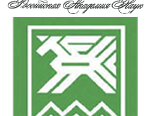Â.Ñ. Âàëèåâ, Ä.Â. Èâàíîâ, Ð.Ð. Øàãèäóëëèí.
Ìåòîä êîìïëåêñíîé îöåíêè çàãðÿçíåííîñòè äîííûõ îòëîæåíèé
Keywords: sediments quality; pollution; heavy metals; specific combinatorial index of pollution
The system for surface waters monitoring in the Russian Federation lacks criteria for assessing the quality of bottom sediments, which makes it difficult to identify and predict
the development of processes affecting water quality, and to handle quite a number of tasks related to state control and surveillance of the use and protection of water bodies. As a result, information on the content of pollutants in sediments appears as a massive body of quantitative data whose practical application for the diagnosis of the ecological state of a water body is extremely difficult. The article analyzes the possibility of applying an algorithm for calculating the specific combinatorial water pollution index (SCWPI) for a comprehensive assessment of sediments pollution, for example, with heavy metals.
The proposed system of formalized indicators uses frequency characteristics of data series on the content of total and labile forms of metals in sediments, scoring of these characteristics,
synthesis of the scores and their conversion to pollution/cleanliness classes, similarly to the procedure in the guidelines RD 52.24.643–2002, but taking into account
sediment-specific patterns and features of pollutant accumulation. The “specific combinatorial sediment pollution index” (SCSPI), the “quality class” and “pollution degree”
of sediments are proposed as integral indicators. The scoring scale is formed with regard to the hazard class of heavy metals, as well as the actually observed ranges of their concentrations in sediments. The boundaries of the scale are the averaged frequency characteristics of the variation series of heavy metal content in sediment samples relative to their median. The contamination level of sediments is estimated by a relative characteristic calculated by comparing actual concentrations with the regional background. Corrections by means of special coefficients are introduced to the SCSPI calculation algorithm to account for the heterogeneity of the particle size composition of sediments. The scale for the quality of bottom sediments is divided into 9 classes and orders of pollution/cleanliness, ranging from “unpolluted” (class 1) to “extremely polluted” (class 5).The calculation of SCSPI for lakes of the Republic of Tatarstan with different levels of anthropogenic load showed good convergence of the results with similar approaches based on probabilistic statistics methods. An optimal result when comparing the pollution classes of water and sediments was obtained from determinations of active forms of metals in them. The estimates of gross metal contents in sediments are indicative of the threats and trends in the state of the water body for the future, if the load remains at the current level.
Indexed at RSCI






